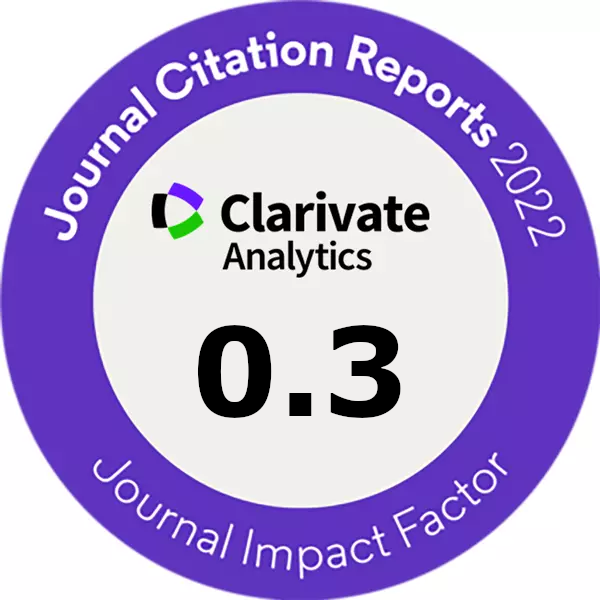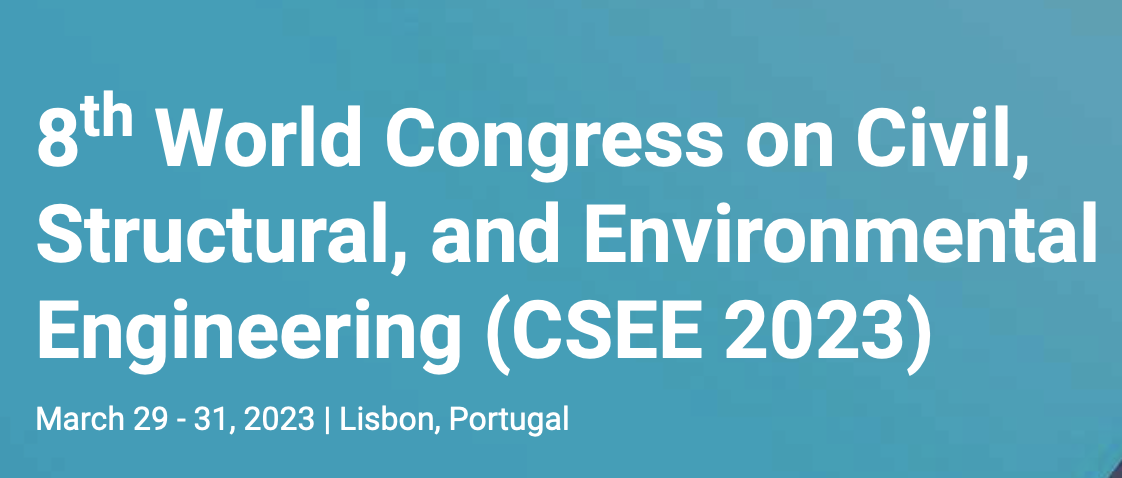NUMERICAL INVESTIGATION OF THE PERFORMANCE OF INSULATED FRP-STRENGTHENED REINFORCED CONCRETE BEAMS IN FIRE
DOI:
https://doi.org/10.14311/CEJ.2018.04.0046Keywords:
Fiber reinforced polymers, Flexural strengthening, Elevated temperature, Fire, Thermal insulation, Finite element, Nonlinear analysisAbstract
Fiber reinforced polymers (FRP) have been widely used in retrofitting and strengthening of deteriorated or deficient reinforced concrete (RC) elements. A major concern about those systems is their performance under elevated temperature which limits the application of FRP for strengthening requirements. Fire protection of the strengthening FRP system can be made by applying an external coating layer of a thermal resisting material. In order to predict the fire performance of such insulated FRP-strengthened members and their efficiency, experimental investigations are required to be carried out for such elements under realistic fire conditions, which requires time and cost.
This paper presents numerical modelling of RC beams strengthened with externally bonded FRP and insulated by a fire protection layer under elevated temperature specified by standard fire tests. The nonlinear time domain transient thermal-stress finite element analysis is performed using the general purpose software ANSYS 12.1 in order to study the heat transfer mechanism and deformation within the beam for fire conditions initiating at the bottom side of the beam. The finite element model accounts for the variation in thermal and mechanical parameters of the constituent materials such as concrete, steel reinforcement bars, FRP and insulation material with temperature. Application is made on an FRP-strengthened and insulated RC T-beam which has been experimentally tested in the published literature in order to verify the adopted modelling procedure. The obtained numerical results are in good agreement with the experimental results regarding the temperature distribution across the beam and mid-span deflection. The presented procedure thus provides an economical and effective tool to investigate the effectiveness of fire insulation layers when subjected to high temperatures and to design thermal protection layers for FRP strengthening systems that satisfy fire resistance requirements specified in building codes and standards.
Downloads
References
Bakis, C.E., Bank, L.C., Brown, V.L, Cosenza, Davalos, J.F., Lesko, J.J, Machida, A., Rizkalla, S.H., and Triantafillou, T.C., “Fiber-reinforced polymer composites for construction—state-of-the-art review”, Proceedings of Journal of Composites for Construction, 6 (2002) 73 – 87.
Yu, B., and Kodur, V.K.R., "Effect of temperature on strength and stiffness properties of near-surface mounted FRP reinforcement", Composites Part B: Eng. 58 (2014) 510-517.
Firmo, J.P., Pitta, D, Correia, J.R., Tiago, C., and Arruda, M.R.T., "Experimental characterization of the bond between externally bonded reinforcement (EBR) CFRP strips and concrete at elevated temperatures", Cement Concrete Composites,60 (2015) 44-54.
American Concrete Institute (ACI). ACI 440.2R-08: “Guide for the design and construction of externally bonded FRP systems for strengthening concrete structures”, ACI Committee 440, Farmington Hills, MI, USA, 2008.
ECP Committee 208, ECP 208-05: “Egyptian code of practice for the use of fiber reinforced polymer in the construction field”, ECP Committee 208, Ministry of Housing and Urban Communities, Egypt, 2005.
Blontrock, H., Taerwe, L., and Vandevelde, P. “Fire tests on concrete beams strengthened with fiber composite laminate”, Third Ph.D. Symposium, Vienna, Austria, (2000), 10 pp.
Williams, B., Kodur, V.K.R., Green, M.F., and Bisby, L.A., "Fire endurance of fiber- reinforced polymer strengthened concrete T-beams", ACI Structural Journal, 105(1) (2008) 60-67.
Klamer, E.L., Hordijk, D.A. and Hermes, M.C.J., “The influence of temperature on RC beams strengthened with externally bonded CFRP reinforcement”, Heron, 53(3) (2008)157–185.
Zhu, H., Wu, G., Zhang, L., Zhang, J., and Hui, D., "Experimental study on the fire resistance of RC beams strengthened with near-surface-mounted high-Tg BFRP bars", Composites Part B: Eng., 60 (2014) 680-687.
Firmo, J.P., and Correia, J.R., "Fire behaviour of thermally insulated RC beams strengthened with EBR-CFRP strips: experimental study", Composite Structures,122 (2015) 144-154.
Salama, A.E., Ghanem, G.M. Abd-Elnaby, S.F., El-Hefnawy, A.A., and Abd-Elghaffar, M., “Behavior of thermally protected RC beams strengthened with CFRP under dual effect of elevated temperature and loading”, HBRC Journal, 8(1) (2012) 26–35.
Kamal, O.A., Hamdy, G.A., and Abou-Atteya, M.A., “Efficiency of coating layers used for thermal protection of FRP strengthened beams”, HBRC Journal, 10 (2014) 183–190.
Eurocode 2. EN 1992-1-2: Design of concrete structures. Part 1-2: General rules- Structural fire design, European Committee for Standardization, Brussels, Belgium, 2004.
Williams, B., Kodur, V.K.R., Green, M.F., and Bisby, L., ”Fire endurance of fiber-reinforced polymer strengthened concrete T-beams, J. ACI Struct; 105(1) (2008) 60–67.
American Society for Testing and Materials (ASTM). ASTM E119: Standard Test Methods for Fire Tests of Building Construction and Materials, West Conshohocken, PA, USA, 2007.
Gao, W.Y., Dai, J.G., Teng, J.G., and Chen, G.M., "Finite element modeling of reinforced concrete beams exposed to fire", Engineering Structures, 52 (2013) 488-501.
Dai, J., Gao, W., and Teng, J., "Finite element modeling of insulated FRP-strengthened RC beams exposed to fire", Journal of Composites in Construction, 19(2) (2015)1-15.
Arruda, M.R.T., Firmo, J.P., Correia, J.R., and Tiago, C., "Numerical modelling of the bond
between concrete and CFRP laminates at elevated temperatures", Engineering Structures,
(2016) 233–243.
Hawileh, R., A., Naser, M., Zaidan, W., and Rasheed, H. A., “Modeling of insulated CFRP
strengthened reinforced concrete T-beam exposed to fire”, Eng. Struct., 31 (12) (2009),
pp. 3072–3079.
ANSYS. Finite Element Computer Code. Version 12.1.0. ANSYS Inc., Canonsburg, PA,
Harmathy, T.Z., “Fire Safety Design and Concrete, Concrete Design and Construction
Series”, Longman, UK, 1993.
Eurocode 3. EN 1993-1-2: Design of steel structures. Part 1-2: General rules- Structural fire design, European Committee for Standardization, Brussels, Belgium, 2005.
Griffis, C. A., Masmura, R.A., and Chang, C.I., “Thermal response of graphite-epoxy composite subjected to rapid heating”, Journal of Composite Materials., Vol. 15 (1981), pp. 427-442.
Cramer, S.M., Friday, O.M., White, R.H., and Sriprutkiat, G., “Mechanical properties of gypsum board at elevated temperatures”, Fire and Materials (2003) 33–42.
Park, S. H., Manzello, S., L., Bentz, D., P., and Mizukami, T., “Determining thermal properties of gypsum board at elevated temperatures”, Fire and Materials, (2009), pp. 237- 250.
Willam, K.J. and Warnke, E.D., “Constitutive model for the triaxial behavior of concrete”, Proceedings of international association for bridge and structural engineering”, ISMES. 1975. Bergamo, Italy, 1975, pp. 1–30.
Downloads
Published
How to Cite
Issue
Section
License

This work is licensed under a Creative Commons Attribution-NonCommercial 4.0 International License.
Authors who publish with this journal agree to the following terms:
- Authors retain copyright and grant the journal right of first publication with the work simultaneously licensed under a Creative Commons Attribution License that allows others to share the work with an acknowledgement of the work's authorship and initial publication in this journal.
- Authors are able to enter into separate, additional contractual arrangements for the non-exclusive distribution of the journal's published version of the work (e.g., post it to an institutional repository or publish it in a book), with an acknowledgement of its initial publication in this journal.
- Authors are permitted and encouraged to post their work online (e.g., in institutional repositories or on their website) prior to and during the submission process, as it can lead to productive exchanges, as well as earlier and greater citation of published work (See The Effect of Open Access).








 ¨
¨
